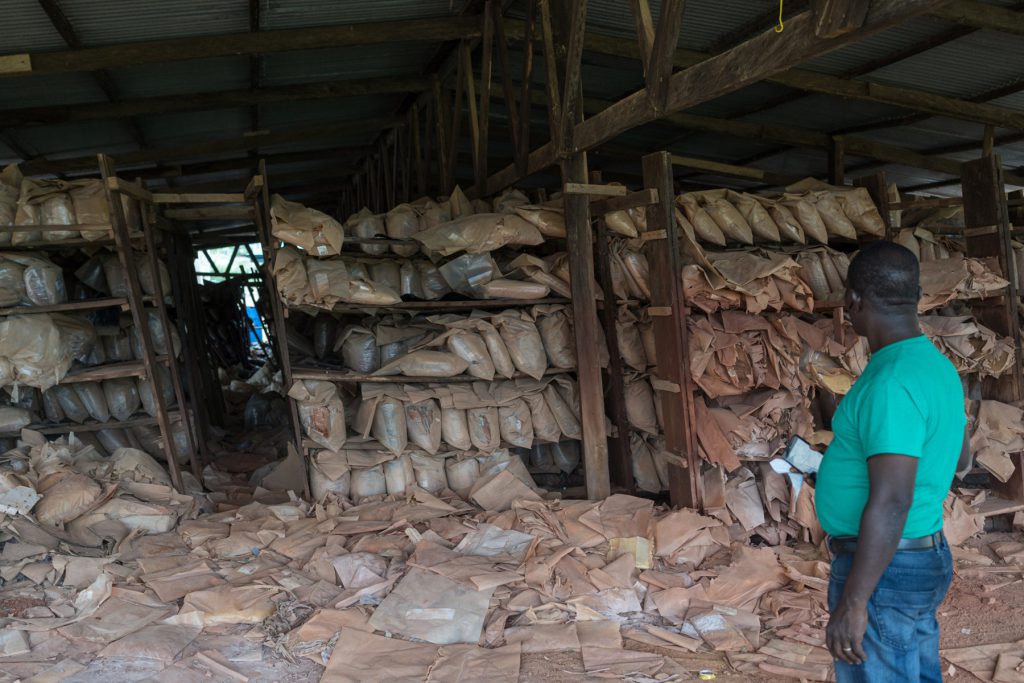
(This article was originally published on China Dialogue under a Creative Commons license)
For generations Emanuel Tabi has watched his community work the land for agriculture. He has also witnessed generations of “galamseyers”, small-scale illegal gold miners whose prospecting has contaminated the nearby Birim River.
Tabi is the assemblyman for Sagyimase, a small community at one tip of the Atewa Forest Reserve, one of the last primary rainforests left in Ghana. Long ago, says Tabi, “our fathers made us to understand that it is because of this forest that we enjoy the kind of rainfall we have, so cocoa, cassava, plantain grows very well in this region.”
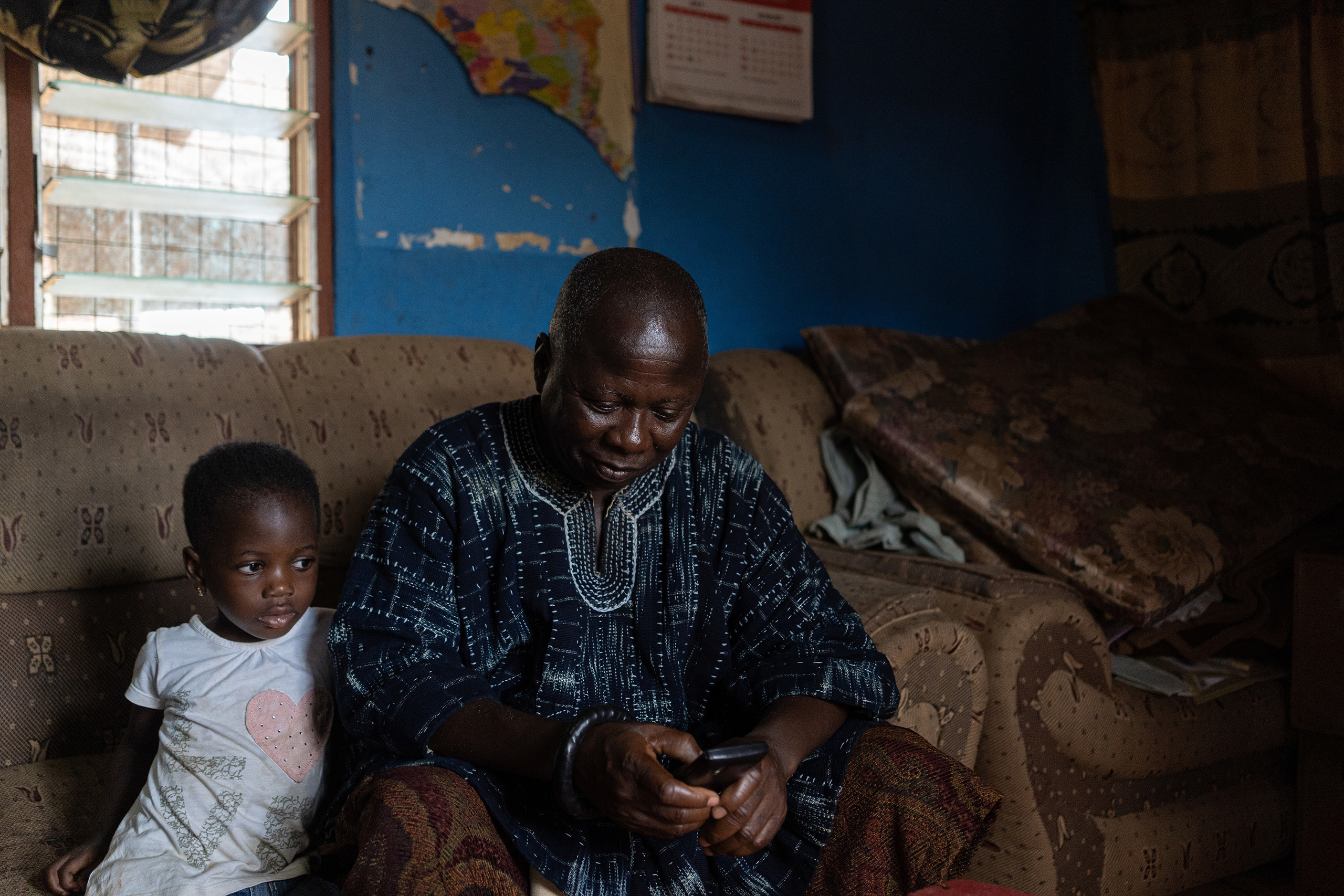
It was after engineers started clearing access roads into the forest to allow prospecting for bauxite and likely further destruction that Tabi decided to act. He’s a member of Concerned Citizens of the Atewa Landscape, one of seven local groups and four citizens suing the government at Ghana’s High Court to stop mining in Atewa.
That’s because in 2017 Ghana reached an agreement with major investor China to develop an aluminium industry in Ghana. Atewa was earmarked as one of three locations for sourcing bauxite, the chief ore for aluminum.
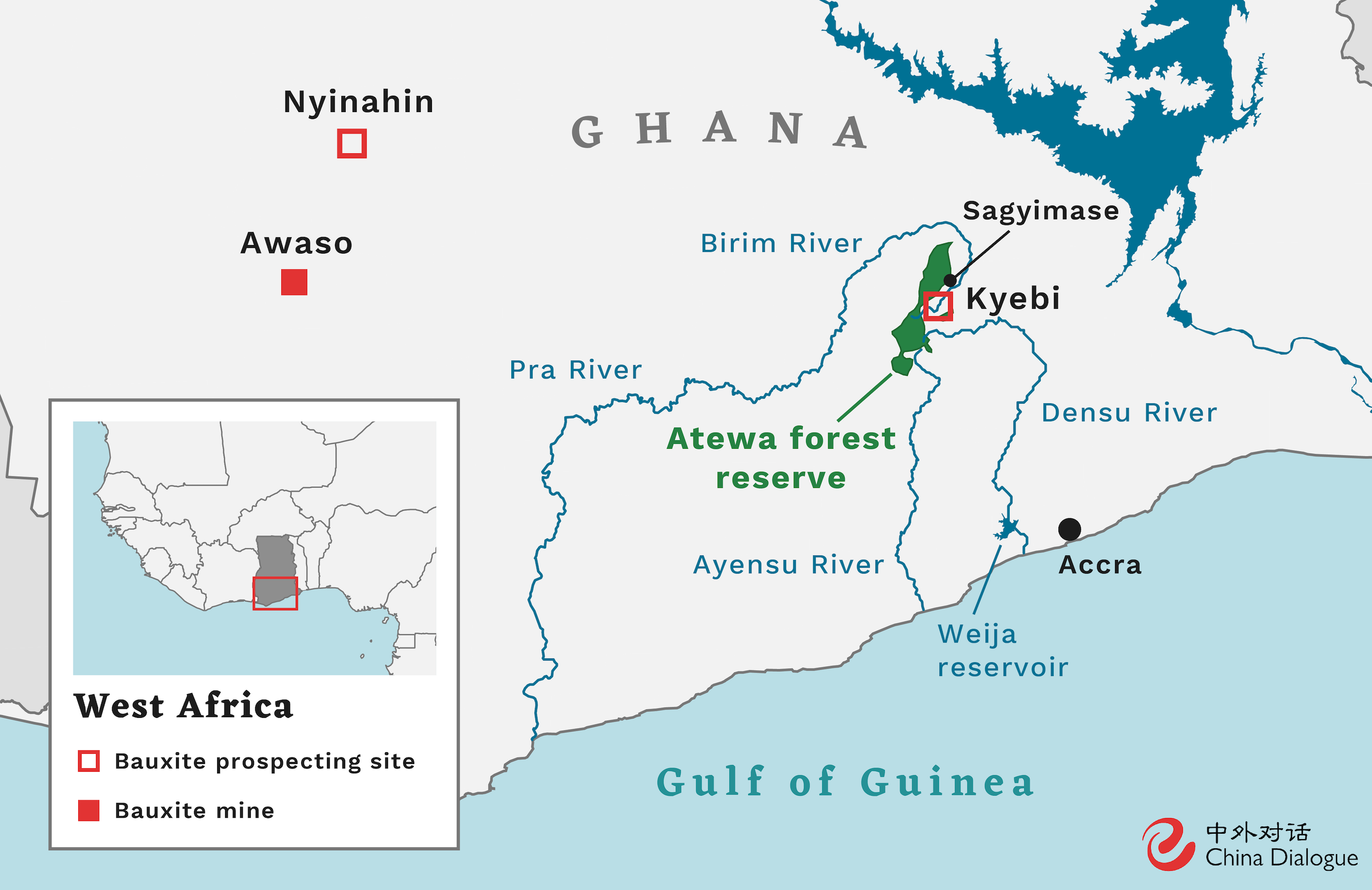
Underneath Atewa is roughly 150 million tonnes of the rock. The US$2 billion barter deal was finalised in 2018 and would see China paid back with sales of refined bauxite. In exchange Ghana is getting roads and interchanges built by Chinese state-owned firm Sinohydro. But as the source of three major rivers, campaigners say mining would poison the water for five million people.
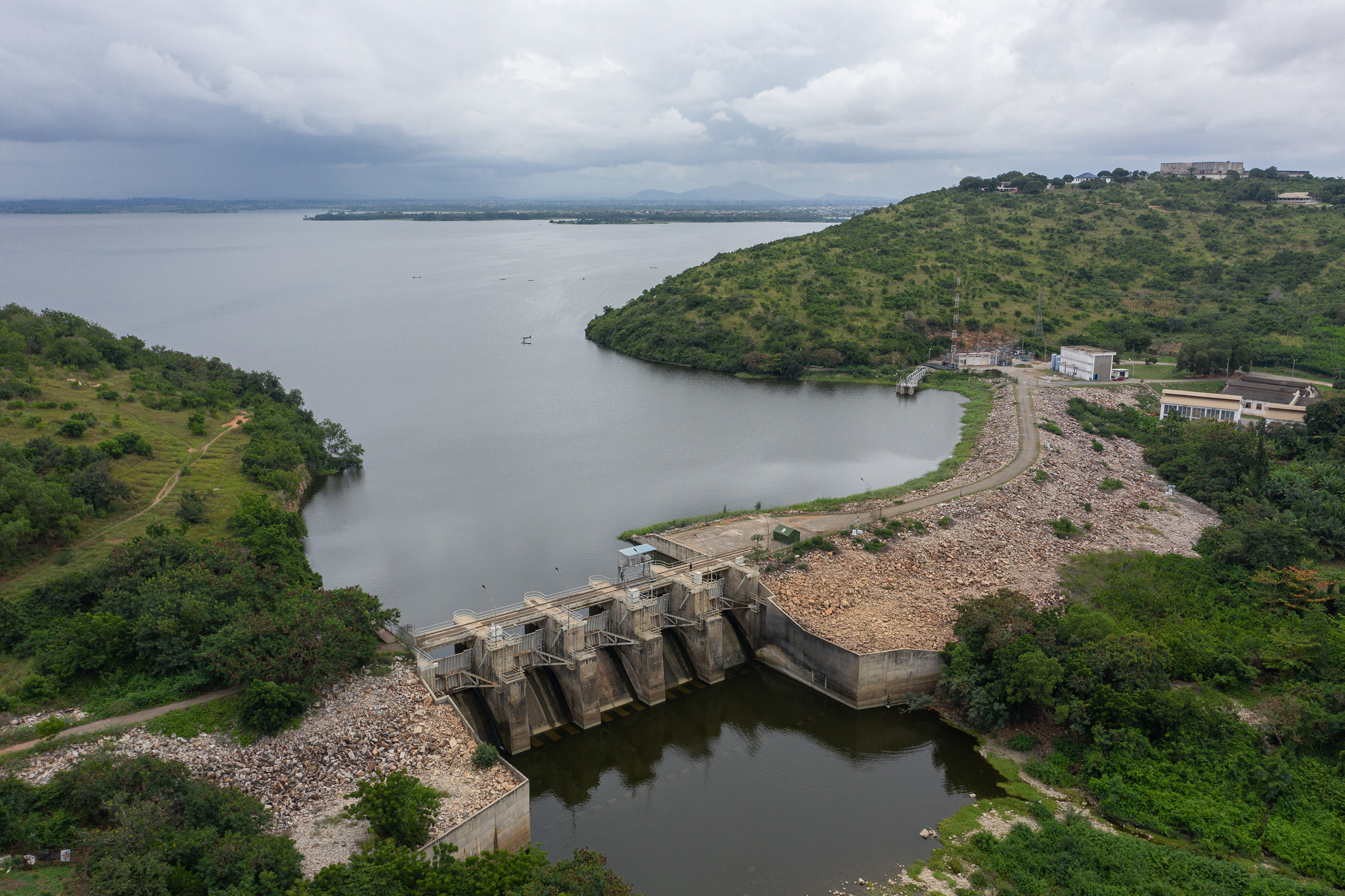
Encompassing 230 square kilometres, Atewa is of critical environmental significance. Over 100 species pushed to the brink of global extinction live in the forest. It contains three quarters of all remaining upland rainforest in Ghana, according to Rainforest Trust. And it holds one of the last intact areas of the Upper Guinean Forest, which once spanned the whole of West Africa. As one of the most fragmented but rich biodiverse ecosystems on earth, the Upper Guinean Forest is home to a quarter of Africa’s mammals.
Atewa is classified as a Globally Significant Biodiversity Area (GSBA) and as a protected forest reserve. All mining activities are supposed to be excluded. Considered the lungs of the earth, these types of forest absorb carbon dioxide and produce oxygen in exchange, regulating rainfall.
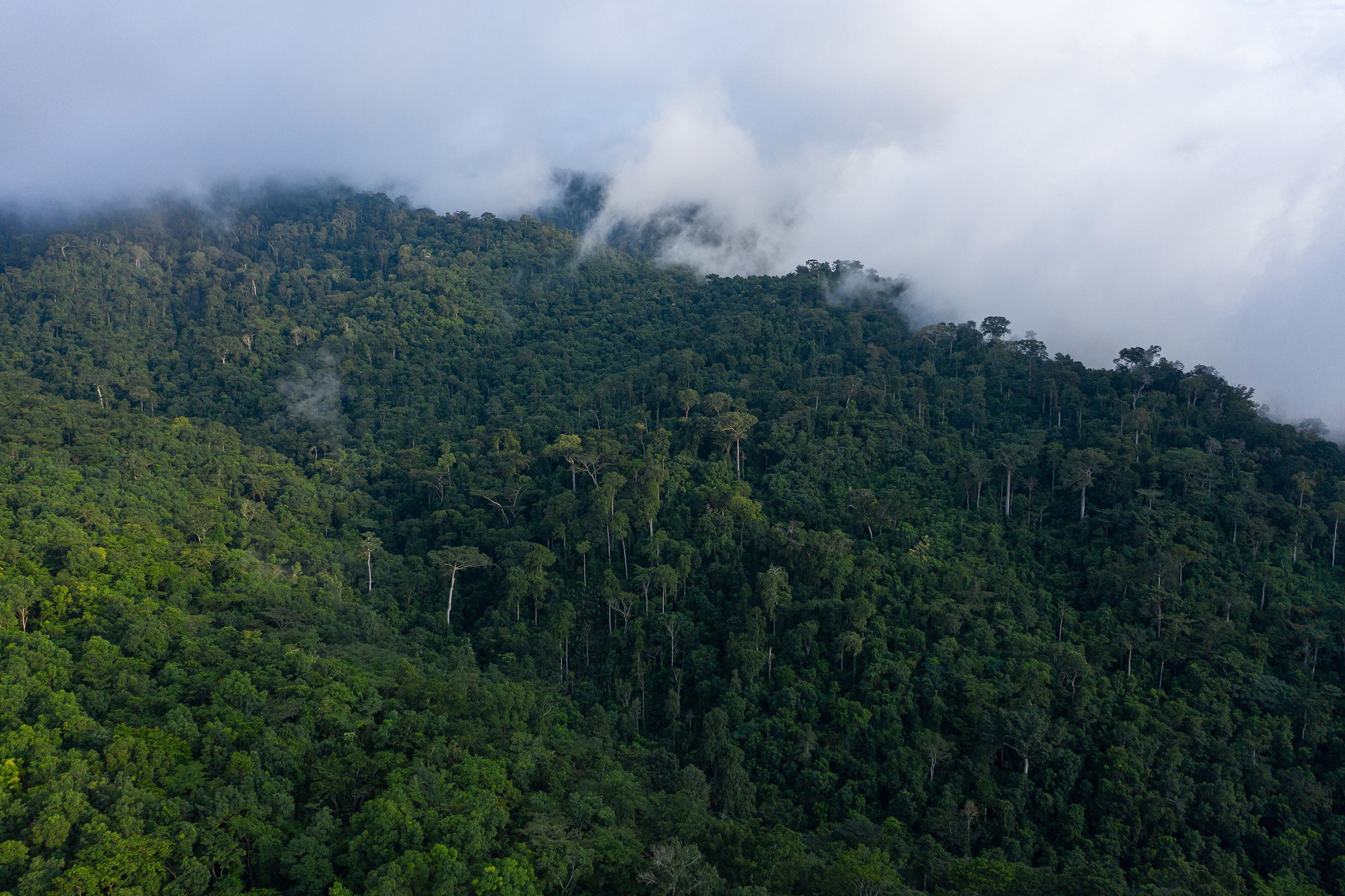
“If the forest is a source of rainfall in the landscape and if the forest is gone what is going to happen?” asked Tabi.
Among the legal claims filed by local groups on 1 July, seen by China Dialogue, is that mining bauxite in Atewa infringed on their constitutional right to life, and to a clean and healthy environment.
The court documents also claim that the Ghanaian government breached the 2006 minerals and mining 703 act by test drilling in Atewa in May 2019 without a licence.
But in a statement of defence, seen by China Dialogue, the Ghanaian government asked for the case to be dismissed. Ghana’s attorney general responded that not all of Atewa is designated GSBA and can therefore be mined.
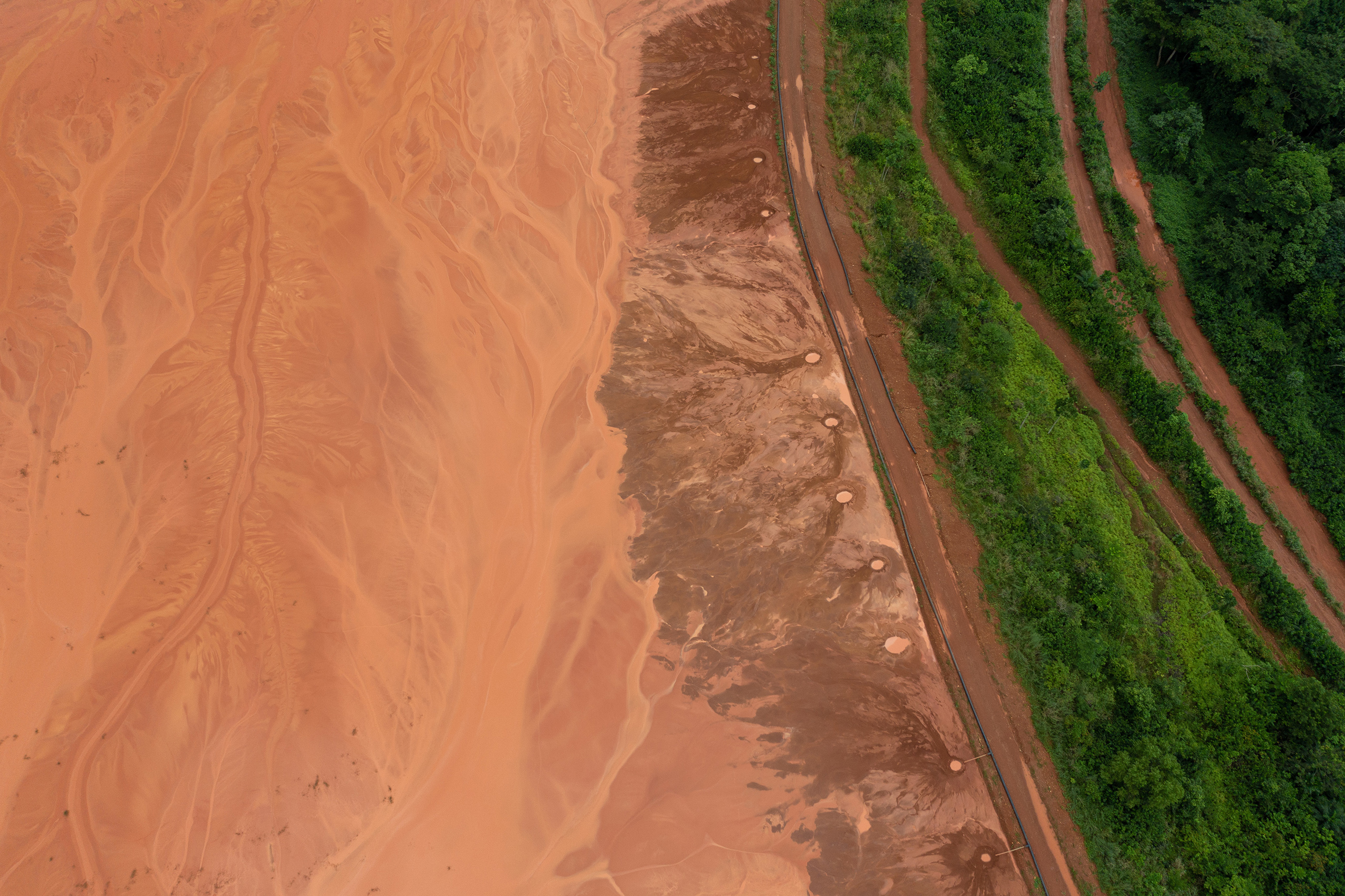
The Ghana Integrated Aluminium Development Corporation (GIADEC), the government agency created to implement the plans, maintains the deal will bring infrastructure. “What we want to do with this bauxite deal is harness it for the benefit of the community,” deputy CEO Akwasi Osei-Adjei told China Dialogue.
“We believe it can pull in a lot of the facility that they lack in those communities, because in those farming communities the income levels are quite low, but with the mining employment will be created, and with that schools can be expanded, high roads, and then [piped] water and electricity.”
He added: “To create that kind of infrastructure at this level is expensive.”
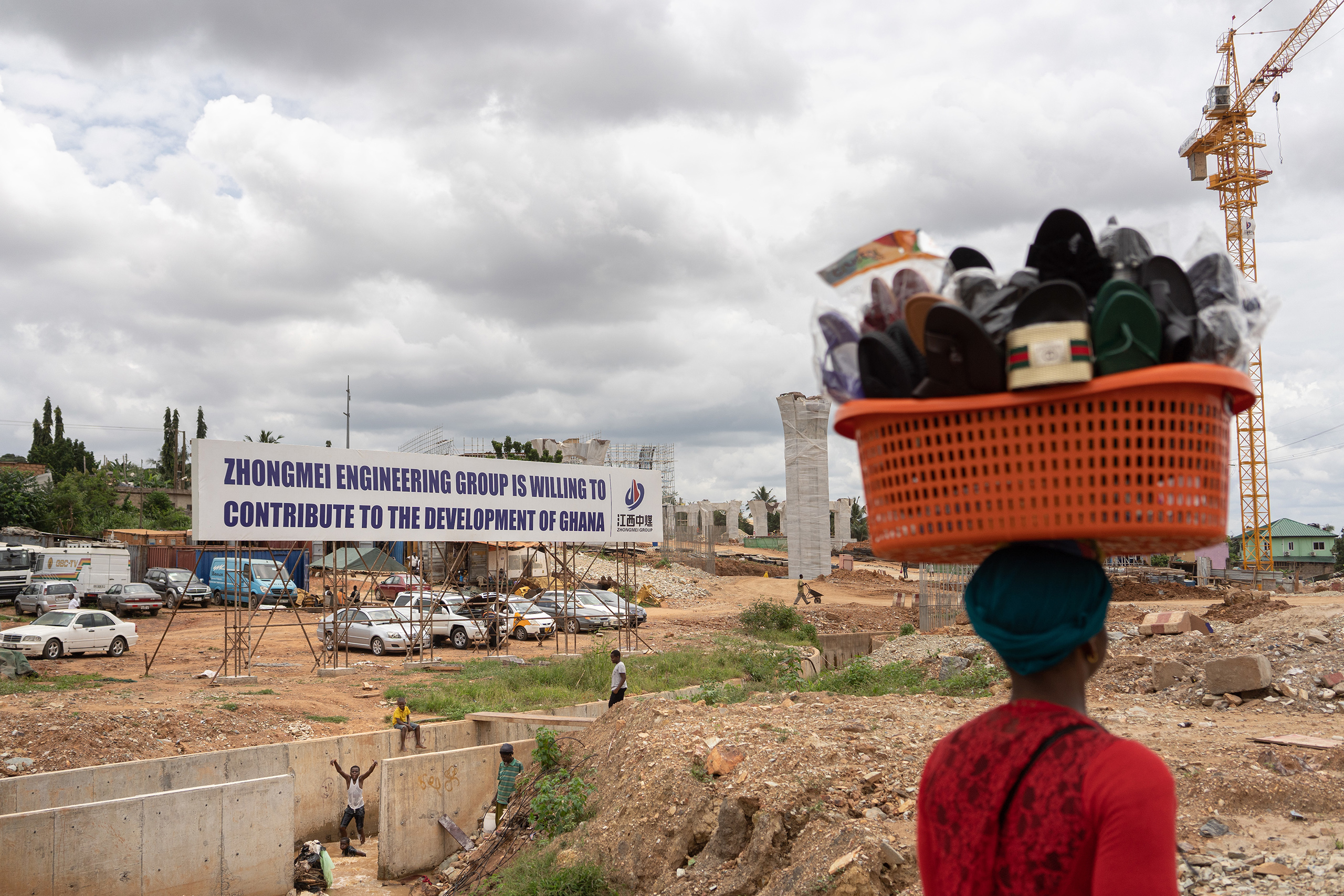
“We are not against the government’s plans to develop the economy. We believe creating more jobs for the Ghanaian citizen is very important,” said Richard Pomeyie, a member of the Ghana Youth Environmental Movement. “What we are against is the mining of the forest.”
A Rocha, one of the conservation NGO’s suing the government, estimates Atewa could generate approximately US$450,000 from tourists a year as a national park.
“That’s one of the alternatives that’s being provided to the government,” said Pomeyie.
More locals are joining the campaign to save Atewa amid concerns that Chinese ventures are having a negative environmental impact for Ghanaians.
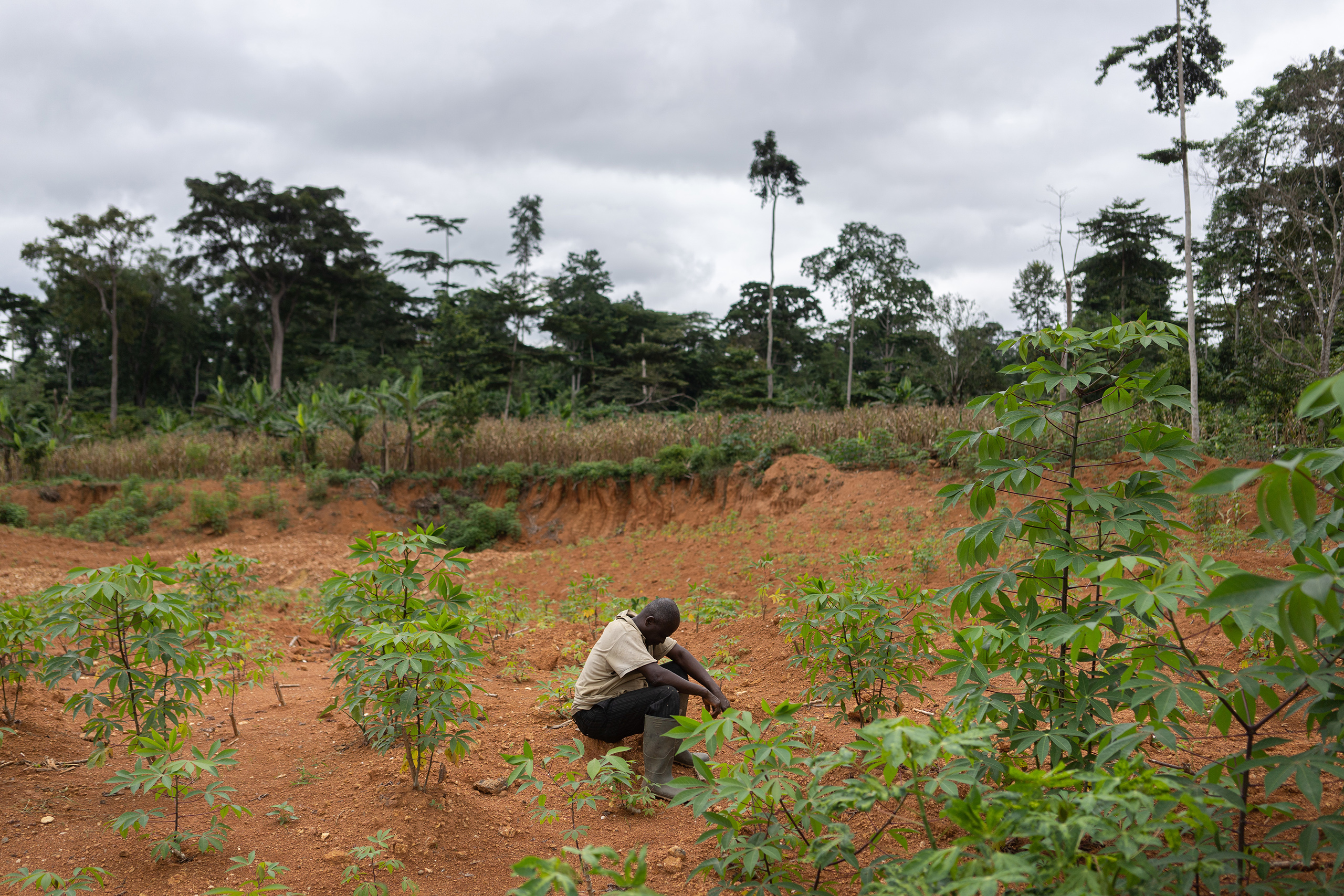
A history of uncontrolled illicit mining backed by Chinese funders has inflamed the debate. A decade ago, more than 50,000 Chinese migrants sought wealth in Ghana’s small‐scale gold mining sector. A 2013 crackdown by former president, John Mahama, led to the deportation of more than 4,500 Chinese workers.
But it failed to dampen the trade leaving Ghanaians seeking tougher measures. The deportation of Aisha Huang, labelled the “Galamsey Queen”, in 2018 caused a furore. Many believed the government of current President Nana Akufo-Addo did not prosecute Huang due to political influence from China over the Sinohydro deal.
“Aisha Huang was not part of the discussion,” lands minister Kwaku Asomah-Cheremeh was forced to clarify at a press briefing in April last year.
Ghana experienced a 60% spike in primary forest loss between 2017 and 2018 – the highest rise globally according to environmental research group World Resources Institute, which released the data through its Global Forest Watch programme. Deforestation was linked to agriculture, such as cocoa production, and mining.
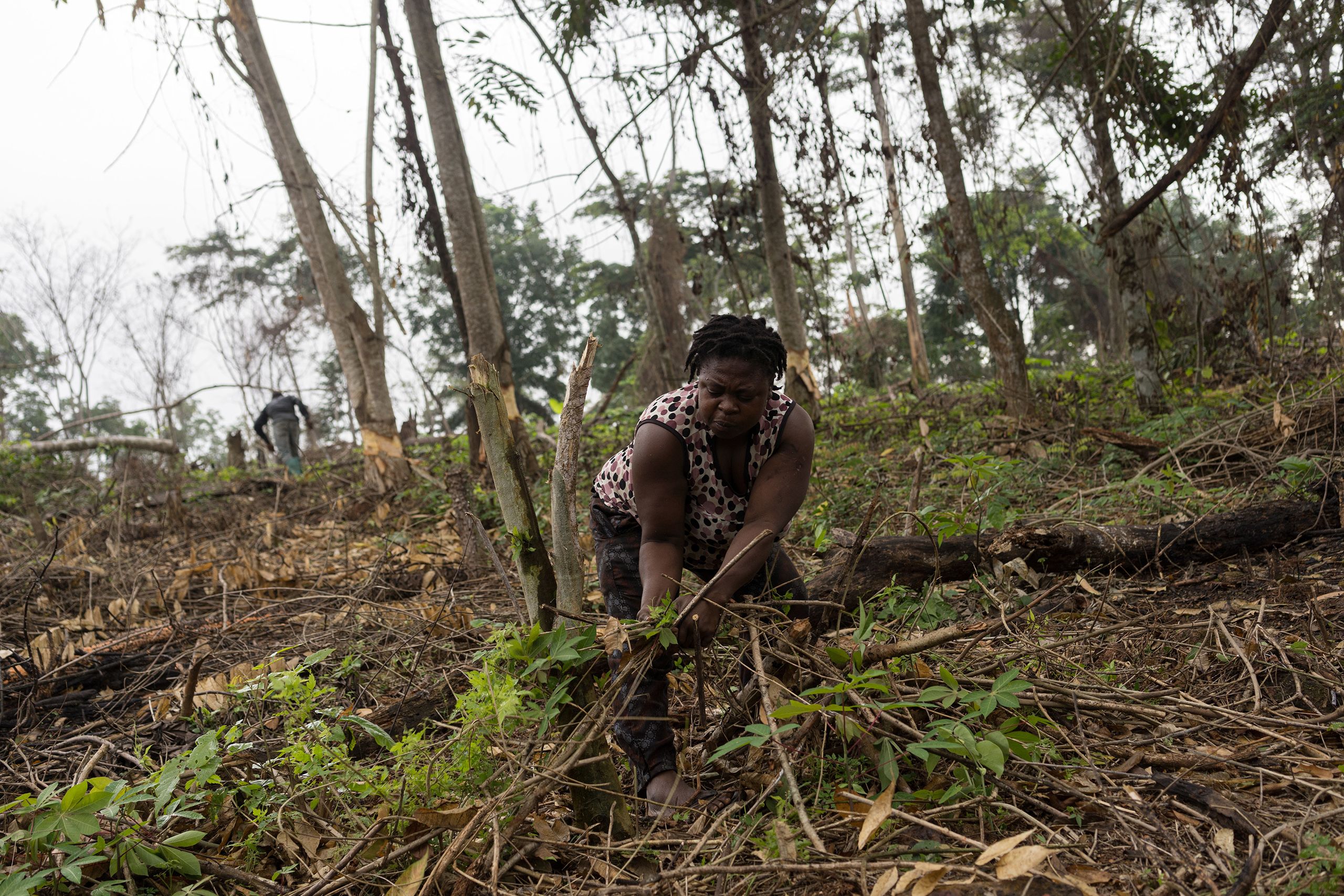
While there have been improvements with new data showing a 50% decline in loss for 2019, “we’d want to see three consecutive years of decline to feel very certain… that it’s a true sustained trend,” Caroline Winchester, a Global Forest Watch research analyst told China Dialogue.
“Ghana deserves some applause,” added Winchester. “It is the third country in the world to have signed an agreement with the World Bank in which they can receive financial rewards for reducing deforestation and degradation.”
And this is why environmental groups believe the Sinohydro deal is in contradiction of this. Activists are not protesting for a complete halt to bauxite mining, “but that it does not touch critical ecosystems like Atewa,” says Daryl Bosu, deputy national director of A Rocha Ghana. He pointed out that the World Bank estimates that deforestation costs Ghana around US$400 million each year.
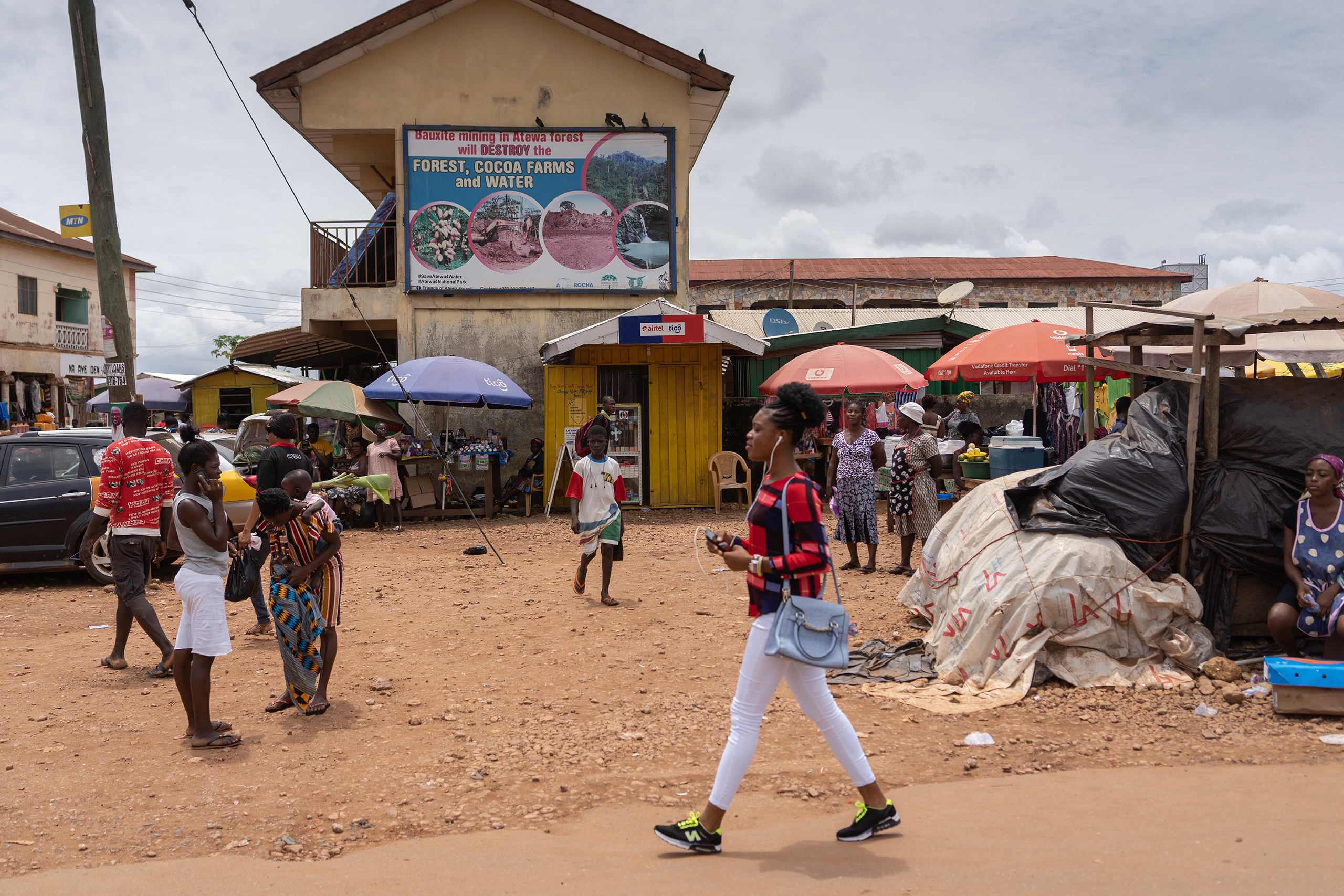
Campaigns to stop mining in Atewa have been ongoing since 2017 with marches, billboards and an online petition with over 30,000 signatures. It’s earned support on social media from actor Leonardo DiCaprio.
There has been widespread condemnation of the Sinohydro deal not only for its environmental impact. It is part of a bigger US$19 billion loan agreement between Ghana and China. The IMF’s 2019 report warned of Ghana’s debt risks given the high capital required to refine bauxite coupled with falling prices for aluminium.
This was echoed by a critical report from the Natural Resource Governance Institute on how heavy borrowing against resources has led to major debt problems across Africa and Latin America. African countries have taken at least US$66 billion worth of such loans from China since 2004. Two state banks, the China Development Bank and Eximbank, accounted for 53% of the loans, according to the 2020 report by the non-profit think tank.
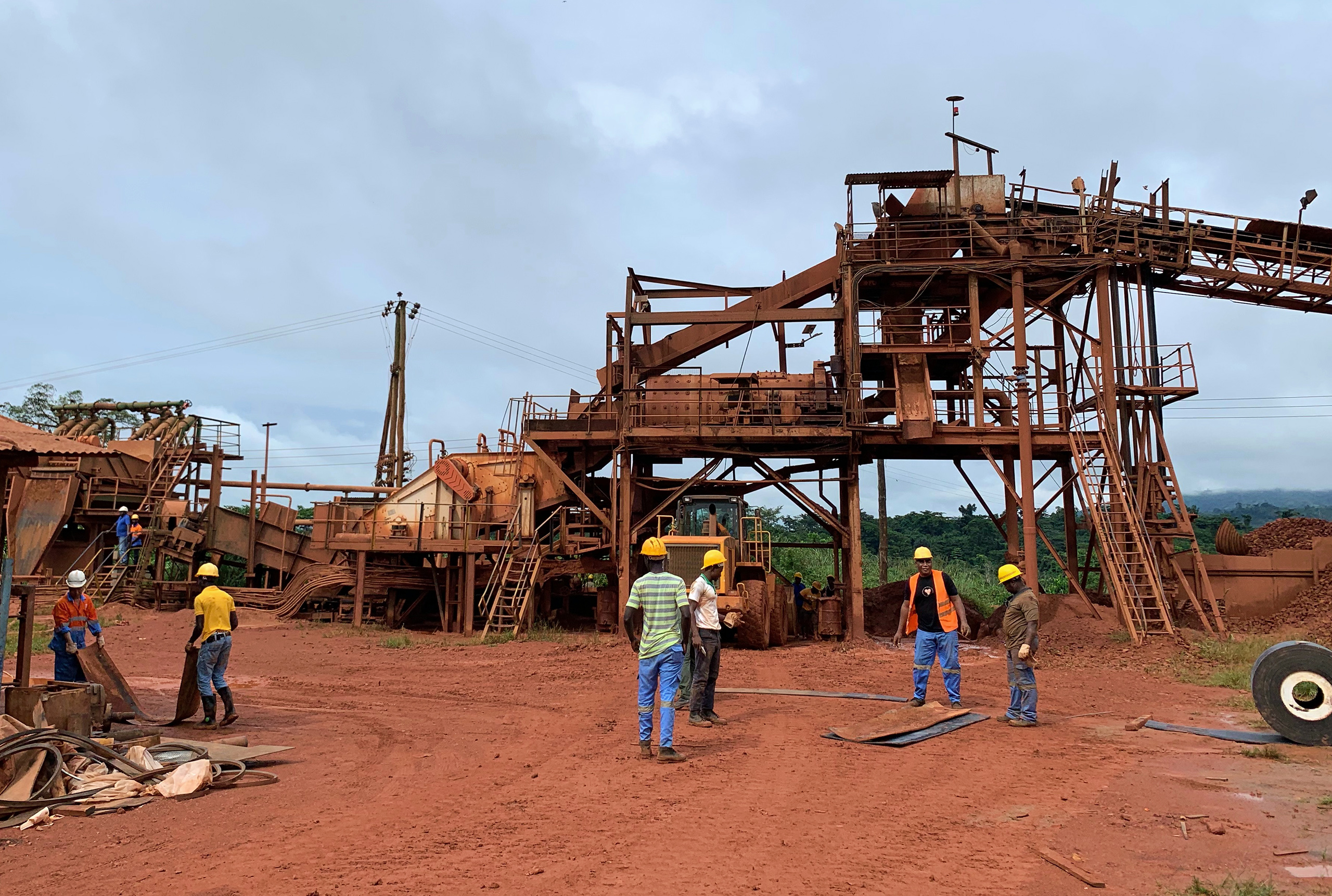
So, it came as no surprise when in April, the International Monetary Fund approved a US$1 billion loan to counter the significant hit of Covid-19 on Ghana’s economy, citing trade disruptions with China as the initial driver of the country’s financial woes. It forecasted Ghana’s debt would reach 69% of GDP, up from 63% in 2019.
The Ghanaian government seems resolute on mining Atewa, and the other two locations in Awaso and Nyinahin. “Plans are far advanced for us to mine the bauxite so that the people of Kyebi [a town bordering the Atewa forest], and Ghanaians in general, would have employment,” President Akufo-Addo said during a three-day tour of the eastern region in October.
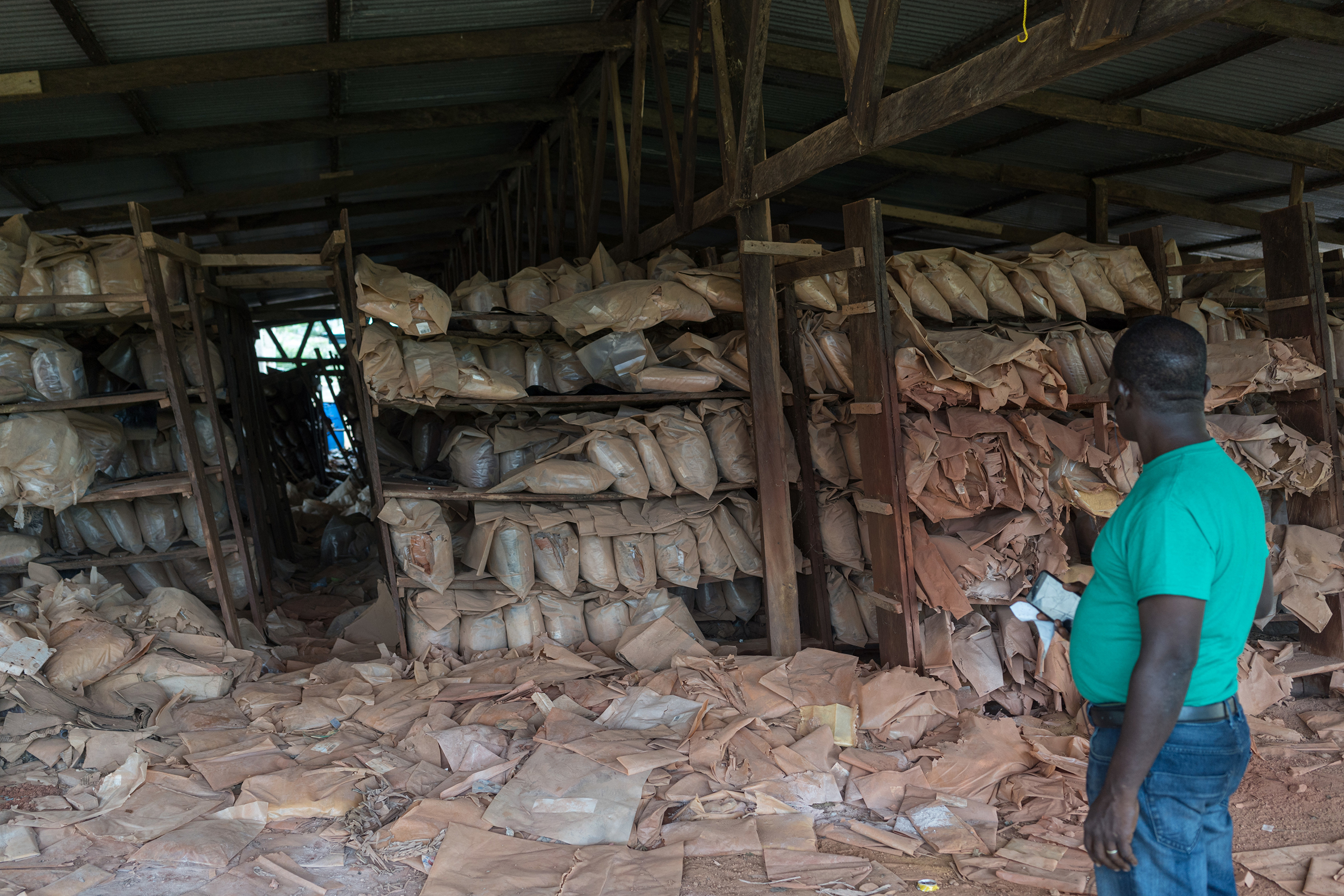
China gave the first batch of money – US$646 million – to Accra last year, with a further US$100 million to be released each year rising to US$200 million as part of the deal. Much of that money has already been spent on the construction of road infrastructure amid fierce campaigning for a general election that takes place in December.
Mining bauxite in Atewa has been discussed for more than a decade. “Many attempts have been made to mine the bauxite and all those attempts were not fruitful for various reasons including the environmental impacts,” says Tabi.
(Nosmot Gbadamosi is a freelance journalist covering West Africa)
Comments